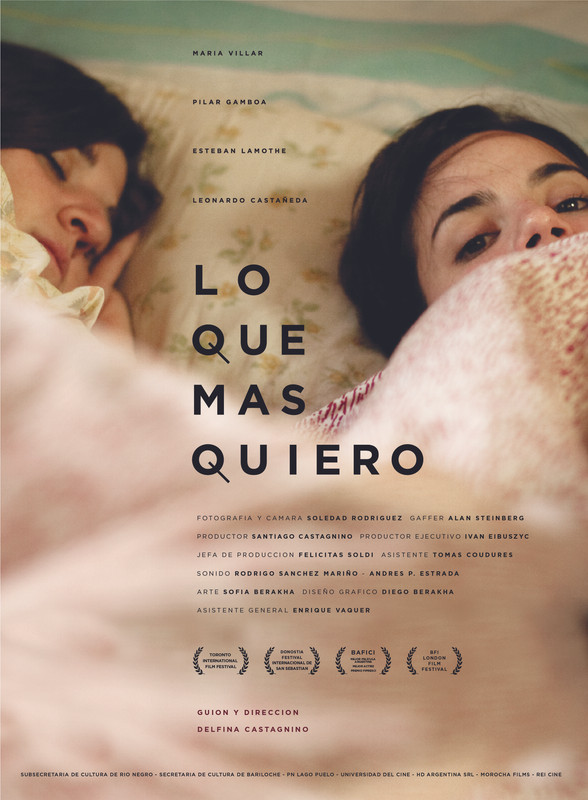Dir: Delfina Castagnino
To say that Delfina Castagnino’s directorial debut is a minimalist piece would be to dramatically understate things. It’s a slice of life, deliberately uneventful with little in the way of story or narrative drive; instead it simply shows us two young women and has us spend some time with them. This may sound like a recipe for tedium, but I was completely taken with What I Love The Most.
Since neither character is named I’ll simply assume they share first names with the actresses playing them, as several other reviewers have. Pilar’s (Pilar Gamboa) father has recently died, and she seems to have inherited his logging company, while she tidies up those affairs she and her actress friend Maria (Maria Villar) spend a few days in a cabin in the woods. At a party Maria strikes up a conversation with a handsome local (annoyingly non-specific credits mean I don’t know who plays him), who she goes out with a few times. That’s really about all that happens, the girls gossip and fight a bit, they keep a few secrets (Pilar that she’s selling much of what she’s inherited, Maria that she’s broken up with her boyfriend) and time passes.
It is perhaps the simplicity of the film that really engaged me in it; there is so little artifice at work here in any department. The acting is spectacular, with Villar and Gamboa failing to strike a false note between them, indeed their characters and their interactions feel so genuine that you could believe that Castagnino had simply approached two friends and plonked a camera down to observe them. This is also a testament to Castagnino’s script, I wonder how tight the writing really was, because everything feels so offhand and natural. There’s not much detail about the girls and their lives, except what is gleaned from, for example, Maria’s conversation at a party and Pilar’s repetitive discussion with her father’s workers, as she essentially lays them off, but they still feel fleshed out and identifiable, if only because they both seem so normal.
The film’s centrepiece is a 13-minute scene in which Maria and that handsome local sit on the hood of a car, drinking and flirting. The camera never moves, never cuts, and yet the whole thing is riveting. If cinema is supposed to shed light on how other people live then this scene does that in as pure a form as fiction film really can. It’s awkward, funny, endlessly familiar. Everyone in the cinema has been on one side of that conversation.
It’s interesting that Delfina Castagnino cut her teeth as an editor, because if there is one thing for which What I Love The Most is stylistically notable it is the lack of editing. Almost every scene unfolds in a single, static, beautifully composed, shot and those that don’t have cuts motivated solely by character (as in one in which the girls go out with two local boys and they all jump from a high rock for a swim). It’s a brave tactic, at a time when audiences have been weaned on films that almost assault us with editing, when they complain, at times, that twenty minutes of character development renders a movie ‘slow’. This is a movie that has no problem taking it slowly, and it also has no problem in depriving you of the usual cinematic tricks that instruct us how to feel. The only cuts tend to be between scenes, the only music is in the end credits. What I Love The Most makes you do a lot of work, but if you don’t mind that you should find it rewarding.
For me this is yet more proof of the cinematic renaissance taking place in Argentina, it’s certainly not for everyone, but I loved it, and am still thinking about it several days later.
★★★★★


No comments:
Post a Comment